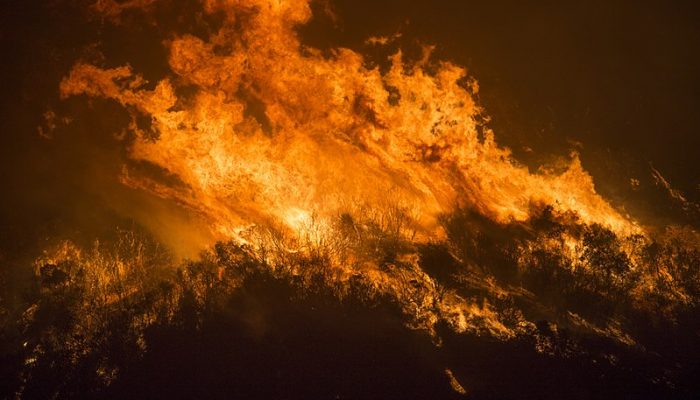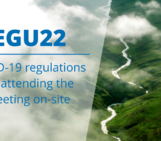
Last year saw some of the biggest blazes in history, and may be a sign of things to come.
2017 was a record year for wildfires. California and neighboring western states saw the most destructive fire in US history, with an estimated 18 billion dollars worth of damage over the season. In central Portugal, fires caused 115 deaths over the same period. Researchers presenting at a press conference at the European Geosciences Union General Assembly in Vienna, Austria, suggest this may be a sign of things to come.
With climate change, wildfires are expected to be on the rise, as fire-prone regions become hotter and drier. But how did weather and climate contribute to this disastrous season? Strong winds and warm temperatures are thought to be responsible for last year’s fires in California, but it remains unclear how much climate change contributed to these conditions. Etienne Tourigny, of the Barcelona Supercomputing Centre, has been on the case.
“Would this event have been possible with or without climate change?” Tourigny asks. “It’s hard to say. What we can say is that there is a high chance that these kinds of events will be more present and more frequent in the future, especially if we see temperatures increasing as they have”
Central Portugal is already very susceptible to wildfires. It’s hot, it’s dry and it’s forested: a recipe for the perfect storm. The 2017 season was particularly tragic due to an unusual set of circumstances: a tropical cyclone passed as the Portuguese Centro Region was ablaze. The nation hoped that the hurricane would bring rain to put out the fires, but, instead, the storm passed the area by, bringing strong winds and spreading the flames.
200 thousand hectares were burned in two days. Even if this was spread throughout an entire season, it would be a very bad year. Speaking at the conference, António Ferreira, a scientific coordinator at the Research Centre for Natural Resources, Environment and Society in Coimbra, Portugal, puts it frankly: “that’s hell as it was taught in Sunday School.”
The region is also vulnerable to climate change, and an increased risk of wildfires is expected by the end of the century. New strategies are needed to prevent such losses in future. Ferreira emphasised that there is no quick fix and, to reduce the risk, policies, plans, habits and investment have to change.
Even in the high Arctic, fires present a threat. This time, it’s not a direct risk to life or infrastructure, but a threat to the environment. Nikolaos Evangeliou, from Norwegian Institute for Air Research, stated that, even in icy regions, wildfires have the capacity to alter the Earth’s climate and accelerate melting.
Thawing permafrost during the 2017 summer left Greenland’s peatlands vulnerable to wildfires and between 31 July and 21 August about 2300 hectares of peatland were burned. Seven tonnes of black carbon generated by the fires rained down on the ice sheet, making the surface darker and causing it to absorb more heat.
If the ice sheet darkens, it reduces Earth’s ability to deflect solar radiation, allowing more of the sun’s energy to warm the planet. The change in Earth’s reflectivity following last year’s wildfires was small, but it is a warning. With larger fires predicted as the climate warms, we could expect much bigger changes to the Earth’s reflectivity towards the end of the century. Such warming spells further trouble for wildfire-sensitive regions.
By Sara Mynott, EGU 2018 General Assembly Press Assistant
References
Evangeliou et al. Open Fires in Greenland: An Unusual Event and its Impact on the Albedo of the Greenland Ice Sheet. Geophysical Research Abstracts, Vol. 20, EGU2018-12383, 2018, EGU General Assembly 2018.
Leitão et al. Dealing with climate change: how to cope with wildfire threat in a climate transition region. Geophysical Research Abstracts, Vol. 20, EGU2018-16640, 2018, EGU General Assembly 2018.
Tourigny et al. An observational study of the extreme wildfire events of California in 2017: quantifying the relative importance of climate and weather. Geophysical Research Abstracts, Vol. 20, EGU2018-9545-1, 2018, EGU General Assembly 2018.



